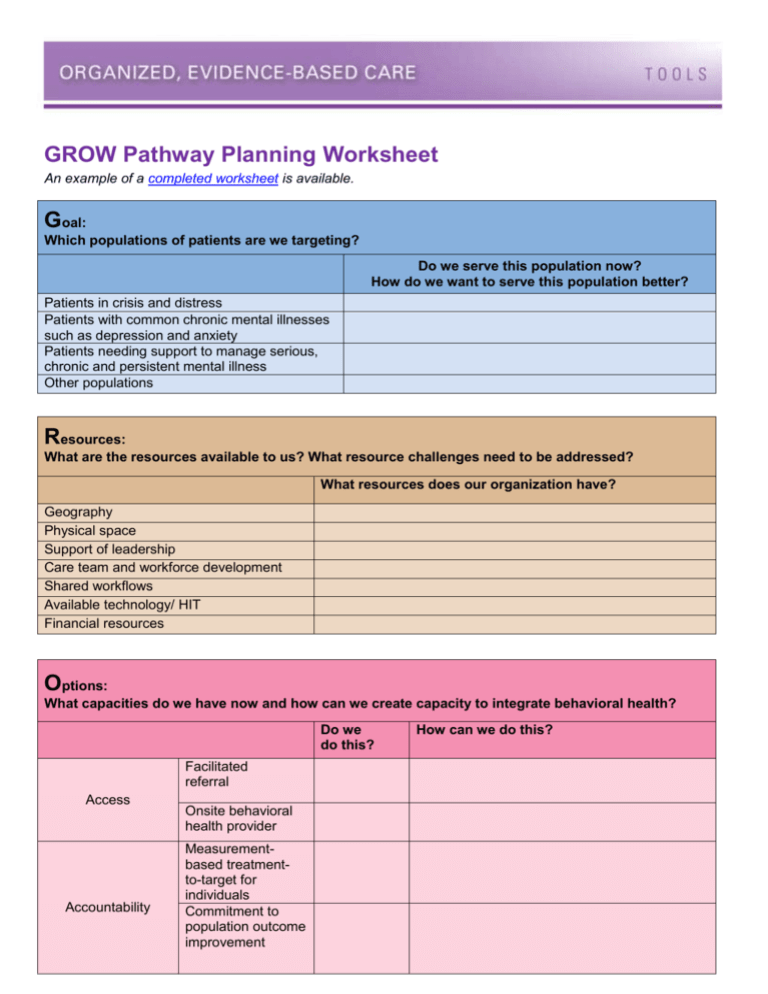GROW Pathway Planning Worksheet
advertisement

GROW Pathway Planning Worksheet An example of a completed worksheet is available. Goal: Which populations of patients are we targeting? Do we serve this population now? How do we want to serve this population better? Patients in crisis and distress Patients with common chronic mental illnesses such as depression and anxiety Patients needing support to manage serious, chronic and persistent mental illness Other populations Resources: What are the resources available to us? What resource challenges need to be addressed? What resources does our organization have? Geography Physical space Support of leadership Care team and workforce development Shared workflows Available technology/ HIT Financial resources Options: What capacities do we have now and how can we create capacity to integrate behavioral health? Do we do this? Facilitated referral Access Accountability Onsite behavioral health provider Measurementbased treatmentto-target for individuals Commitment to population outcome improvement How can we do this? Workflow: What changes will need to be in place for us to deliver integrated behavioral health? Does staff need to be hired? What types of staff? Do existing or new staff need to be trained? What facilities, HIT, and other resources are required to implement the integrated workflow? What internal communication materials and protocols, and practice-specific guidelines and protocols for psychiatric emergencies do we need? How will our physical space foster collaboration? Should providers share a pod? What materials do we need to introduce the new care delivery pathway to patients and practice clinicians and staff? How will we schedule visits? Will we schedule follow-ups interspersed with open access appointments to facilitate time for just-in-time consultations and warm handoffs? When and how will we evaluate our progress? What would be the next step if we don’t reach our goal? How will we know we are not just going through the motions? Key Strategies for GROWing Your Pathway: Start somewhere; start small. You can’t do everything for everyone all at once. Be specific in how any change will be implemented to maximize success. Your practice may need to start with a small target population and then gradually spread the improved process. “You don’t want to turn on the faucet and find more problems than you can handle.” Focus on evolution and continuous improvement. Fully integrated behavioral health often happens over time–it is a journey. Know and understand your population/community and their challenges and needs. Stress the goal of true transformation. One solid practice change with measureable outcomes is better than a large effort that does not result in improvement. Ask: How will your practice know you are not just going through the motions? If your initial effort does not meet expected outcomes, consider implementing a more intensive approach. Make Adjustments No matter where a practice begins its integration effort, it must maintain a commitment to continuous improvement and enhancement of services. A practice might need to repeat the GROW cycle several times in order to achieve its stated goals. We recommend using quality improvement strategies to inform the development and implementation of the behavioral health integration pathway. For more information and tools on quality improvement, including the Plan Do Study Act (PDSA) model to make small tests of change, see the Quality Improvement Implementation Guide.






